Goa
Fun Goa Holiday Package
Calangute Beach forges the real attraction
Anjuna beach popular beaches
Baga Beach One of the most famous beach
Dona Paula is one the famous attraction
beautiful boat ride to the Grand Island
Chorao Island is the largest island
Shanta Durga Temple is one the famous attraction
Harmal Beach One of the best and cleanest beach.
- includes
- excludes
Things to do in and around vascodagama
How to reach vascodagama?
We've established convenient pickup and drop options right in your vicinity. Simply download the app, book your package using your location, and inform us of your exact whereabouts. Additionally, we've outlined various routes to reach the destination, taking into account commonly used traffic patterns.
Additional Information about Goa
Goa For enquiries
If you are looking to know more information about Goa, our team at vascodagama will assist you personally through the below dedicated number
Goa address
Goa,
vascodagama,
goa
Whatsplan's Goa contact number : +91 9842067265
Places covered in(17)
Dona Paulapanaji, goa
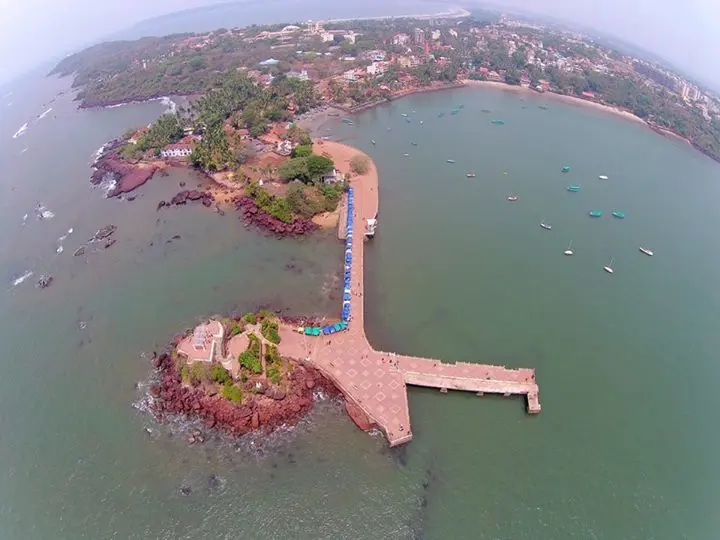
Dona Paula is a former village, and tourist destination, in the suburbs of Panaji, Goa, India. It is today home to the National Institute of Oceanography, and just alongside it lie the Goa University and the International Centre Goa. It is also home to a number of hotels, small and large, and the luxury Cidade de Goa is situated in the area.Dona Paula was a woman of charity and is known to have helped the villagers and worked a lot for their betterment, so after her death, the villagers decided to rename the village as Dona Paula. Initially the village was called Oddavell. The Dona Paula Beach is also a major tourist attraction. According to a local myth, Dona Paula entombed in the Cabo Chapel, the residence of the Governor of Goa and is supposed to be seen emerging from the moonlit waves wearing only a pearl necklace. Several tourists as well as locals guided by this myth visit the beach for a glimpse of Dona Paula. The Cabo Raj Bhavan is situated at a scenic spot of Dona Paula. It is also home of a historic British war-graves cemetery. After the end of Portuguese rule in Goa in 1961, Dona Paula became a fashionable residential area and address. Dona Paula is the home to some of the top Industrialists and policy makers of the state. It is also the most expensive residential location in Goa. The Raj Bhavan of Goa is located near the La Marvel Colony in Dona PaulaDona Paula located on the beautiful and famous sea stretch that spans from Panjim, Miramar and Dona Paula is a very famous area frequented by tourists. During the tourist season, Dona Paula transforms into a crowded stretch which is otherwise a calm beautiful place during monsoons. A large part of the famous Hindi movie Ek Duuje Ke Liye was shot here, popularising the place further. An action sequence from Rohit Shetty's movie Singham was shot here.The idyllic rocky tourist attraction lies at the spot where the Mandovi and the Zuari rivers meet and confluences with the Arabian Sea at a distance of 1km from this point.One of the most curious attractions in Dona Paula is a whitewashed statue perched on the rocks near the popular ferry jetty. Sculpted in 1969 by Baroness Yrse Von Leistner, there are different versions to its purpose of origin. According to Goa Tourism Board's website, it is named "Image of India" and depicts the figures of Mother India and Young India, one looking to the East and the other to the West. The Wheel of Ashoka is in the middle half, buried in stone, to represent the ancient culture, that nurtured this blend of ideas and emotions. While in the book 'Walking in Goa' published by Heta Pandit, it is said that the Baroness had actually sculpted statues of philosopher Robert Knox and his wife because she admired him.
Zauri River Dash-Goavascodagama, goa
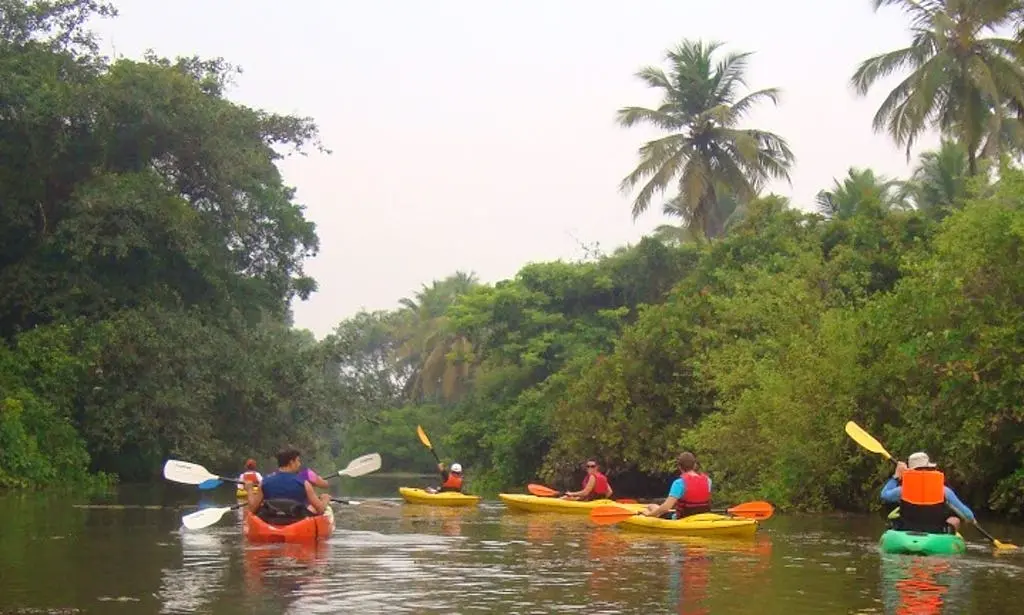
Originating from the Western Ghats, Zuari river is the largest in Goa and is ideal for kayaking, boat safaris and birding trips. Kayaking is popular recreational water sport that is not very physically demanding and can be done by people of all levels of fitness. In kayaking, a 'Kayak' is used to navigate the water. Though it is similar to canoeing, the differentiation comes from the manner in which the paddler sits in the craft and the number of blades in the paddle. As you sail, observe the rich biodiversity of coastal Goa and varied species of flora and fauna. Venture into this refreshing water sport amidst the tranquil backwaters of Zuari river.
Arambol-Goapanaji, goa
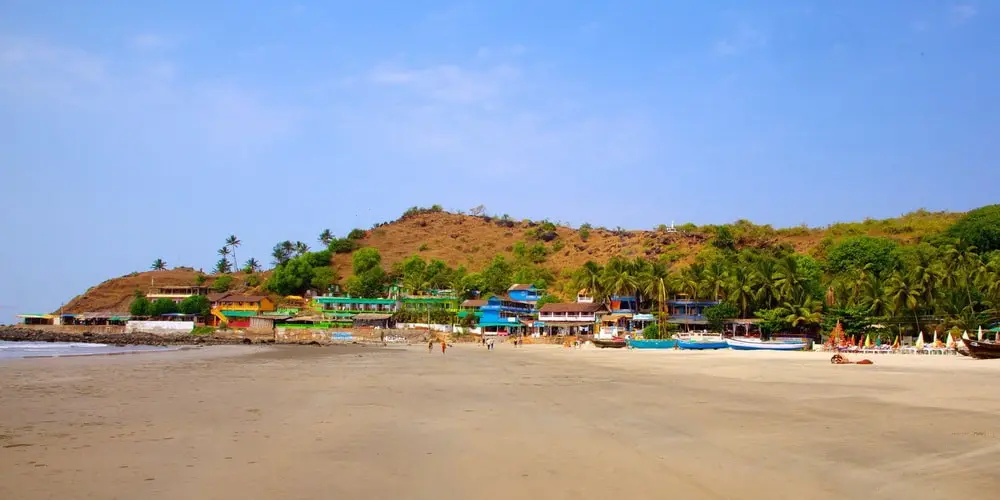
Arambol is a traditional fisherman village, located approximately a 90 minutes drive from Dabolim Airport (GOI) within the Pernem administrative region of North Goa, India. The beach attracts many international tourists, mainly during the winter season between November and March.Arambol has a distinct Bohemian feel which attracts many alternative travellers. Arambol beach is considered to be one of the most beautiful beaches in Goa, bordering Keri Beach to the north and Mandrem Beach to the south.Located 43 km north of Goa's capital city of Panaji, Arambol has a population of around 5300. Arambol (CT) is engaged in the manufacturing of following items (in decreasing order of importance): country liquor, chili products, dry fish[citation needed] Every Wednesday, a weekly market takes place at the Arambol Bus Stand area, where local vegetable vendors sell their products such as Green Leafy Vegetables, Potatoes, Spices, Fruits and similar edible products. There are few supermarkets on the Arambol Street that caters to all the basic kitchen needs and supplies. There is a branch of State Bank of India and HDFC Bank at the Arambol Bus Stand area. There are 3 Co-operative Bank in the town.[citation needed] Due to the composition of both national and international musicians, Arambol is home to a rich live music scene, dominated by Gypsie-Fusion bands.[citation needed] Strong winds during the main season make it a significant location for leisure sports, like paragliding and kite surfing. Every evening during the peak tourist season, there are sunset parties on Arambol beach.[6] A variety of practitioners in the healing arts offer courses in Yoga, meditation, Odissi dance, and musical instruments (like Tabla, Sitar and other traditional Indian as well as Western instruments). The Tribal Dance Festival and the Indian Juggling Convention take place in Arambol.[8][not specific enough to verify] The Goa Contact Festival and In-Touch Festival both offer Contact Improvisation Dance and Somatics.[citation needed] All are scheduled for late January/early February.[citation needed]
Calangute Beach-Goanorth_goa, goa
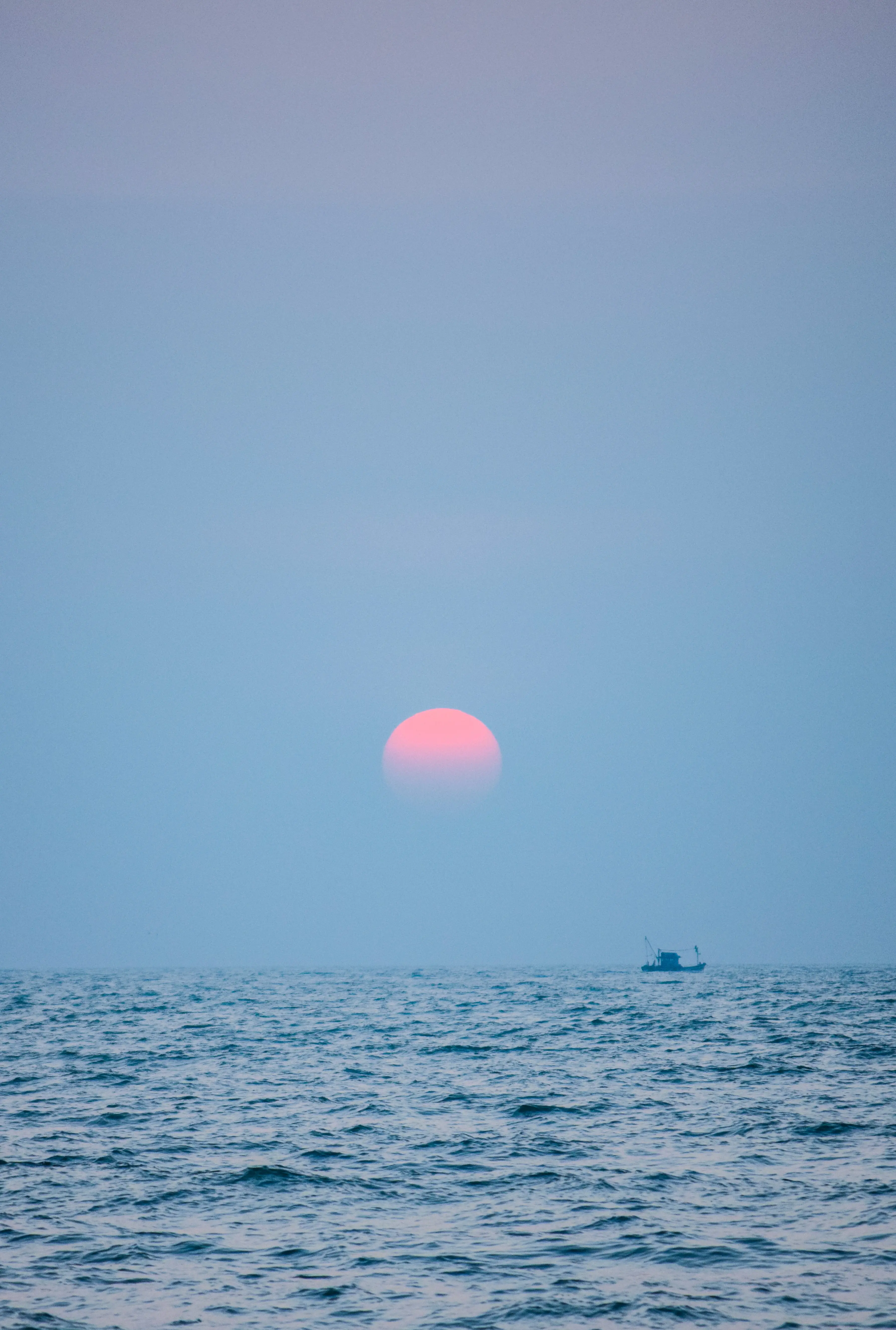
Calangute is a town in North Goa, famous for its beach. The beach is the largest in North Goa and visited by thousands of domestic and international tourists alike. The peak tourist season is during Christmas and New Year, and during the summer in May. During the monsoon season, from June through September, the sea can be rough and swimming is prohibited. The beach offers water sport activities like parasailing and water skiing, among others.
Monteiro Vaddo-Goanorthgoa, goa
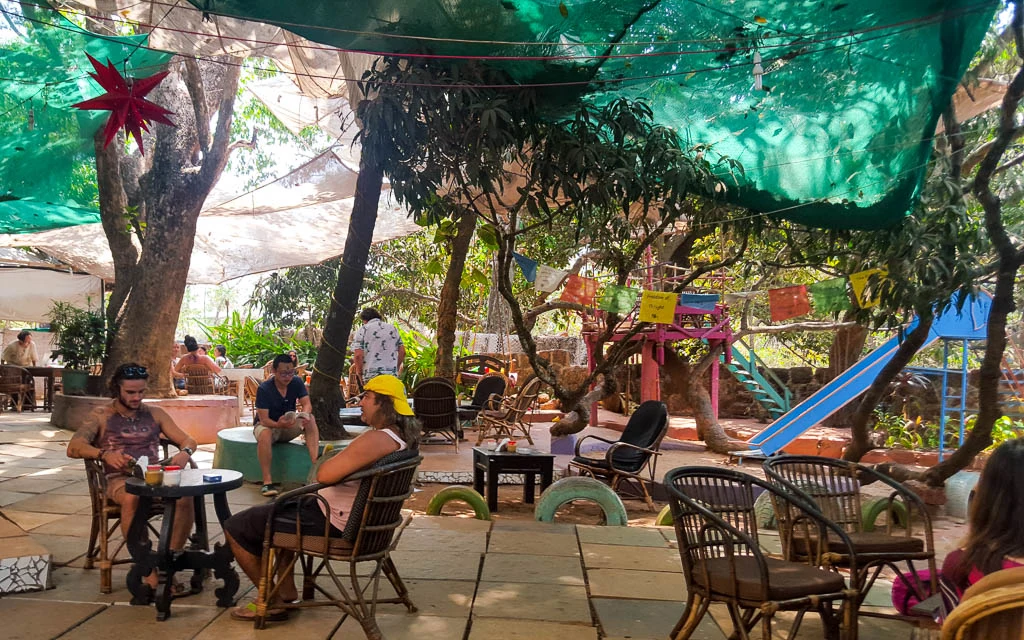
Anjuna ([ɦɔɳzuɳẽ]),Monteiro vaddo is a village located on the coast of North Goa, India. It is a Census Town, one of the twelve Brahmin comunidades of Bardez. It is mostly a tourist destination. Its church, St. Michael's Church, Anjuna, founded in 1595, is dedicated to S. Miguel, and celebrates the feasts of S. Miguel (29 September) and Nossa Senhora Advogada (second week of January). There are three large chapels in the parish: the one to S. Antonio (Praias), to Nossa Senhora de Saude (Mazalvaddo), and to Nossa Senhora de Piedade (Grande Chinvar). The chapel at Vagator became the church of the new parish of Vagator, dedicated to S. Antonio, in the twentieth century.
Paradise Cruises-Goapanaji, goa

Paradise Cruises is an enterprise that offers services in the fields of water sports and adventure tourism. Owned and operated by professionals active in the fields of water transportation, salvage and underwater services, it was set up to provide guests with an insight into Goa's treasured waterways and marine resources while enjoying entertainment aboard our luxurious cruises. Goa ranks high in the hearts of many as one of India's most beloved tourist destinations. With the status of industry conferred on tourism, the sector's development has increased by leaps and bounds. Along with miles of golden coastline, Goa has long and wide beautiful rivers and scenic lakes making it an ideal location for long and languid river cruises.
Monkey Beachpanaji, goa
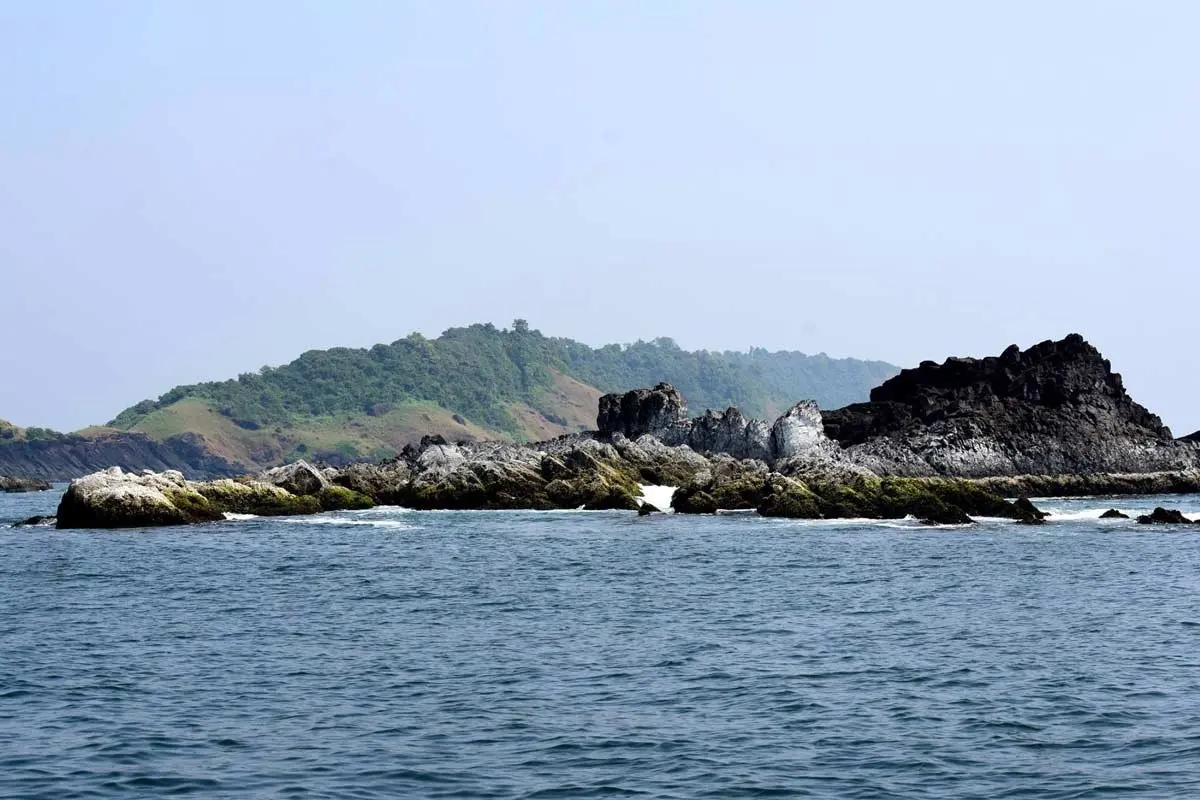
Monkey Beach is Eden Robinson's first novel, published by Vintage Canada in 2000. It was the recipient of the 2001 Ethel Wilson Fiction Prize, which is given to work by writers from British Columbia,and was a shortlisted nominee for the Scotiabank Giller Prize and the Governor General's Award for English-language fiction. The story of Monkey Beach is relayed through the eyes of Lisamarie Hill, a feisty young woman with supernatural abilities. Lisamarie's brother, Jimmy, has gone missing at sea under questionable circumstances. Lisamarie reflects on profound events in her life, as she waits on news of her brother. Perhaps in reflecting on these formidable events, a new light will be shed on the ominous circumstances in her life, and within the community of Kitamaat. The introduction of various memorable characters allows the reader to fully grasp the richness of Lisamarie’s tale. Lisamarie possesses’ supernatural abilities, the ability to see and to communicate with other worldly beings. These abilities are a source of contention, yet they will eventually satiate the turmoil in her life. The struggle between the physical plane and the supernatural realm also correlate to a greater struggle between cultural identity and mainstream society. In all of this, Lisamarie is led on a journey to understand the disappearance of her brother, and come to terms with her identity. Location and animal symbolism plays a large part in First Nations literature. Animals are used as symbols of the ancestors or as warnings and messengers from the spirit world to those still living. The locations in Monkey Beach play a large part in the emotional progression of the characters. Throughout this and her following books Robinson uses all the natural elements to weave the culture of the land into the story. Symbolism is a very important part of Monkey Beach as well as the Haisla culture. Throughout the story crows are used as a symbol of luck and warning for Robinson’s characters. The first introduction to the importance of crows in this story is Jimmy’s belief that they are a symbol of luck for him. This comes after feeding them before his swim meet leads inevitable win. Following this it becomes Jimmy’s good luck charm for his following competitions. Luck is not the only symbol that the crow carries, in another section of the novel Spotty, Jimmy’s favourite raven, alerts Jimmy to the danger his sister is in during the middle of the novel. Lisamarie had several encounters with crows playing a part in her spiritual visions. Coming along with the Red man who was a sign of death, the crows appearing with Jimmy were a sign of the impending threat to Jimmy’s life; a foreshadowing of what was to play out through the rest of the novel. Ravens and crows play a very large part in the mythological histories of many west coast First Nations communities. They represent both the trickster and the creator of the world. The Raven in Haida mythology is the bringer of light and stars to the world. Also according to some communities such as the Haida the Raven is seen as the creator of man as well, unlocked from the clam shell they were trapped in as expertly depicted by Bill Reid in his sculpture The Raven and the First Men. Haida mythology
Anjuna Beachnorth_goa, goa
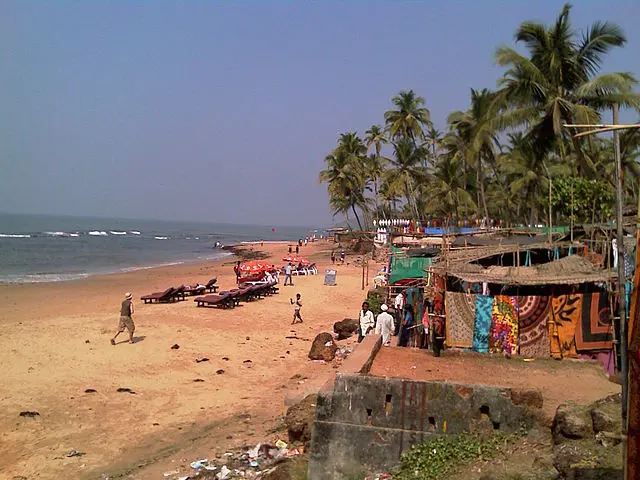
Anjuna is a village located on the coast of North Goa, India.Beach near anjuna village is called anjuna beach. It is a Census Town, one of the twelve Brahmin comunidades of Bardez. It is mostly a tourist destination. Shopping lovers can enjoy lot of bargaining at the famous Anjuna Beach Flea Market. A good mix of Gujarati, Kashmiri, Tibetan shops make this one of the most sought after places. Shop here for souveniers, artifical colourful jewellery, hip – hop dresses and decoration items in this market which is lively at night too. The village itself is a bit ragged around the edges and is spread out over a wide area, but that's part of the charm. Do as most do: hire a scooter or motorbike and explore the back lanes and southern beach area and you’ll find a place that suits. Anjuna will grow on you.
Vagator Beachnorth_goa, goa
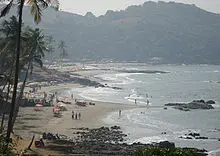
Vagator Beach is the northernmost beach of Bardez Taluka, Goa. It is located on the opposite bank of the Chapora River from Morjim in Pernem. To the south of Vagator is Anjuna, one of the first hippie haunts of Goa. Vagator Beach has dramatic red cliffs looking down on the shore and two fresh water springs within a stone's throw of the sea. But Vagator has little by way of seaside accommodation.Vagator Beach is split into two main beaches by a seaside headland which holds the car park and lots of stalls selling trinkets, clothes, soft drinks and snacks. As you face the sea, on your right is North Vagator Beach (Big Vagator) and on your left Ozran Beach, more commonly known as Little Vagator Beach.Vagator is a little more laid back, though still pretty much steeped in the rave culture. The tourist traffic is predominantly Western backpackers, however it has also become popular with Indian tourists, who particularly come to watch the sunset from the rocks.The sunset through rocks is breathtaking from Vagator Beach.There are a number of places playing to a dance & trance crowd during the tourist season. These include: Nine Bar located just above Little Vagator, Hilltop (a little back from Little Vagator) and Primrose back towards Big Vagator beach, they play different types of trance and psychedelic music from different DJ's from around the world. Disco Valley of Vagator Beach is a place that used to be the place for Goan trance parties starting from very early 1990s. 2013 saw the popular Sunburn Festival shift its base to Vagator from Candolim Beach.[1]Hill Top in Vagator is popular for rave parties. New year tends to be the most chaotic with crowds easily in the thousands attending the party at Hilltop. Hill Top has a party every Sunday evening in the tourist season. DJs from Germany, Sweden, England, France, Italy, India, Russia and Israel are regular performers at Hill Top.
Ilha Grande island-Goapanaji, goa
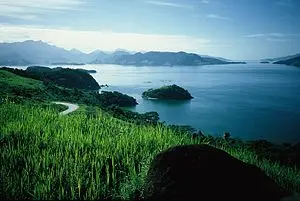
Ilha Grande (Portuguese pronunciation: [ˈiʎɐ ˈɡɾɐ̃dʒi] "Big Island") is an island located off the coast of Rio de Janeiro state, Brazil. The island, which is part of the municipality of Angra dos Reis, remains largely undeveloped. For almost a century it was closed by the Brazilian government to free movement or settlement because it first housed a leper colony and then a top-security prison. Cândido Mendes high-security prison housed some of the most dangerous prisoners within the Brazilian penal system. It was closed in 1994. The largest village on the island is called Vila do Abraão with approximately 1900 inhabitants. The island, which is 193 km2 (75 sq mi) in area, is now a popular tourist destination that is noted for its scenic beauty, unspoilt tropical beaches, luxuriant vegetation and rugged landscape. The highest point is the 1,031 m (3,383 ft) Pico da Pedra D'Água. Most of its territory is within the Ilha Grande State Park. The remainder of the island is subject to stringent development restrictions.
Shantadurga Temple-Goapanaji, goa

Shri Shantadurga Temple is a Private temple complex belonging to Goud Saraswat Brahmin community(Saraswat Temple). 30 km (19 mi) from Panaji at the foothill of Kavalem village in Ponda Taluka, Goa, India. H.H.Shrimad Swamiji of ShriKavale Math is Spiritual head Of Shree Shantadurga Saunsthan,Kavale. Shree Shantadurga is the Kuldevi (family deity) of many Goud Saraswat Brahmin families. This current temple structure of Shree Shantadurga Devasthan was built during the period from 1713 AD to 1738 AD by Naroram Rege Mantri.On 4 December 2016, the temple completed its 450th year of existence. (Margashirsh Shuddh Panchmi). The temple is dedicated to Shantadurga, the goddess who mediates between Vishnu and Shiva. The deity is also called 'Santeri' colloquially. Purana talks of a battle between Shiva and Vishnu The battle was so fierce that the God Brahma prayed to Goddess Parvati to intervene, which she did in the form of Shantadurga. Shanta Durga Temple Complex Lake Shanta Durga Temple Shanta Durga Temple - Majestic Deepa Stambha (Lamp Tower) Shri Shantadurga Temple from front
Conspiracy of the Pintosnorth goa, goa
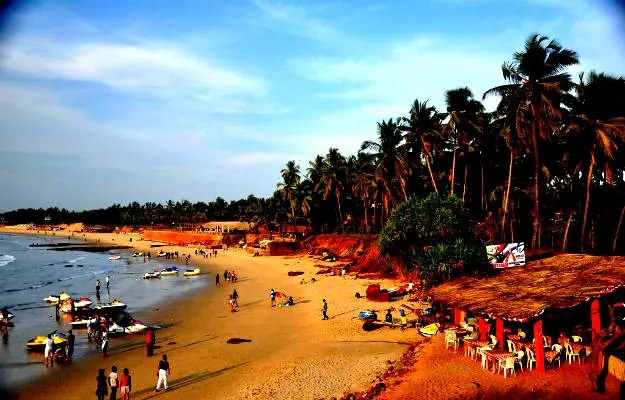
Candolim is a census town in North Goa and is located in the Bardez taluka in the state of Goa, India. It is situated just south of the famous Calangute Beach, and is a popular tourist destination.
Reis Magos Fort-Goapanaji, goa
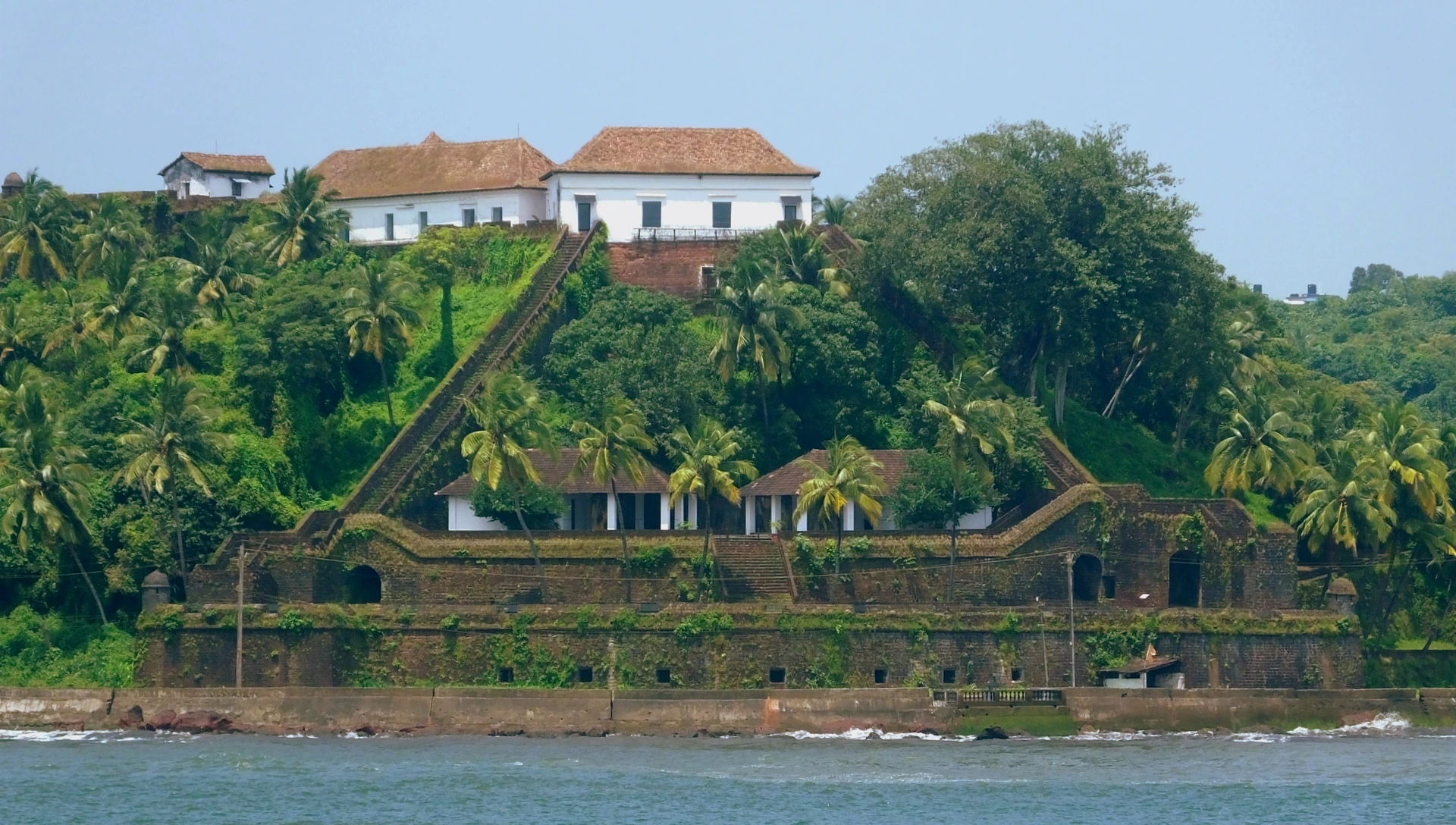
Standing tall and proud overseeing and protecting the taluka of Bardez, across the river from the capital city of Panaji, this fort was one of the first bastions of the Portuguese rulers against enemy invasion. The structure exudes majesty and grandeur and though it is not the biggest fort in Goa, it still commands respect and awe. Pre-dating even the prestigious and much larger Fort Aguada, and situated at the narrowest point of the mouth of the Mandovi, it’s skilful construction and strategic placement made this fort nearly impregnable and it was an important asset to the Portuguese colonists. The fort has also been skilfully repaired in recent years and partly restored to its former glory. It is clearly visible, with its distinctive reddish stone walls, all the way from Panaji which lies across the Mandovi River from it.
Chapora Fort-Goapanaji, goa
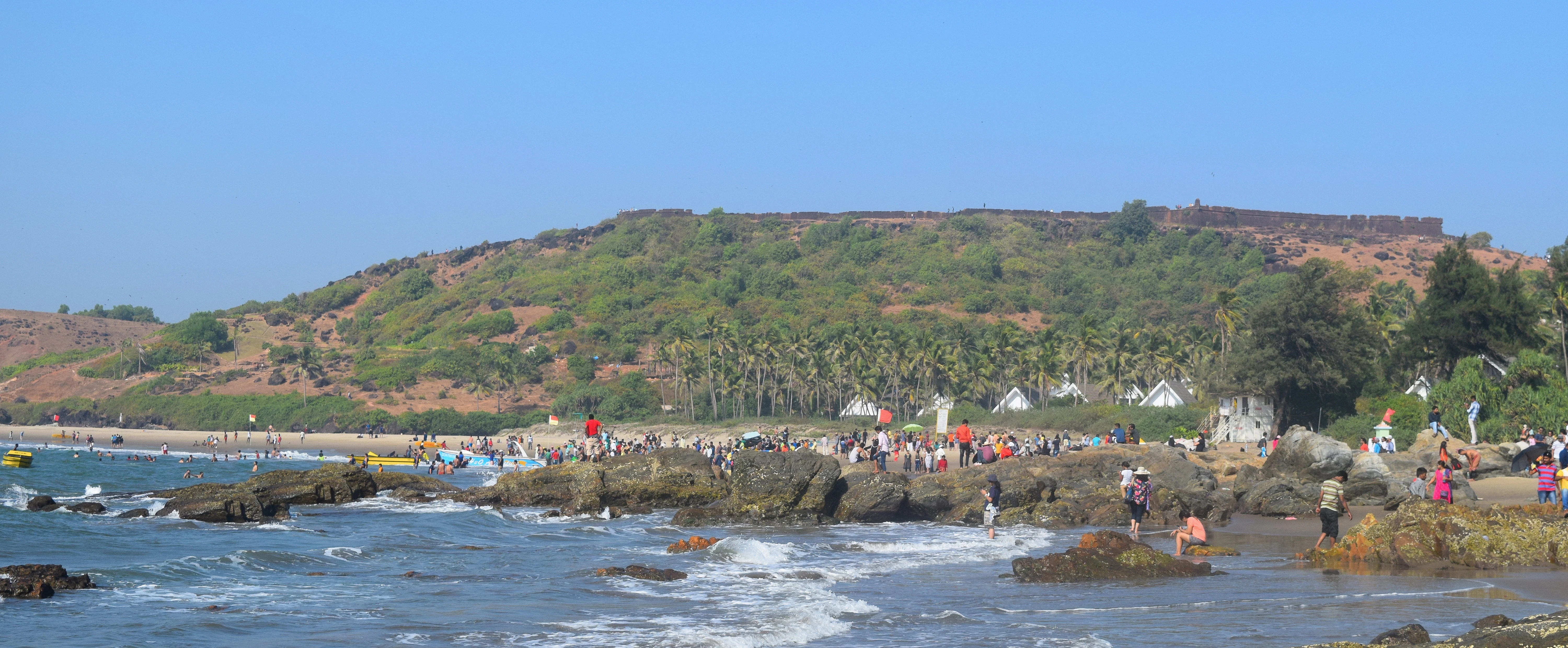
The Chapora fort is a very popular tourist attraction of Goa, being situated close to the Vagator beach. From the fort one can get a commanding view of the Vagator beach, Ozran Beach, Morjim Beach and the mouth of Chapora river. The shooting of the Hindi bollywood movie Dil Chahata Hai was at the fort also added to the forts popularity. The fort has wide walls with ramparts over which one can walk and go around the fort. The walls are lined with arrow slits, gun ports and murder holes at regular intervals. The fort can be reached by road from Mapusa. To reach here one has to take the road branching to the right just two kilometers before the Vagator beach. A small road leads to the base of a hill atop which the fort lies. Tourists can also reach the fort by climbing the hill from Vagator beach.
Chorao Island-Goanorthgoa, goa
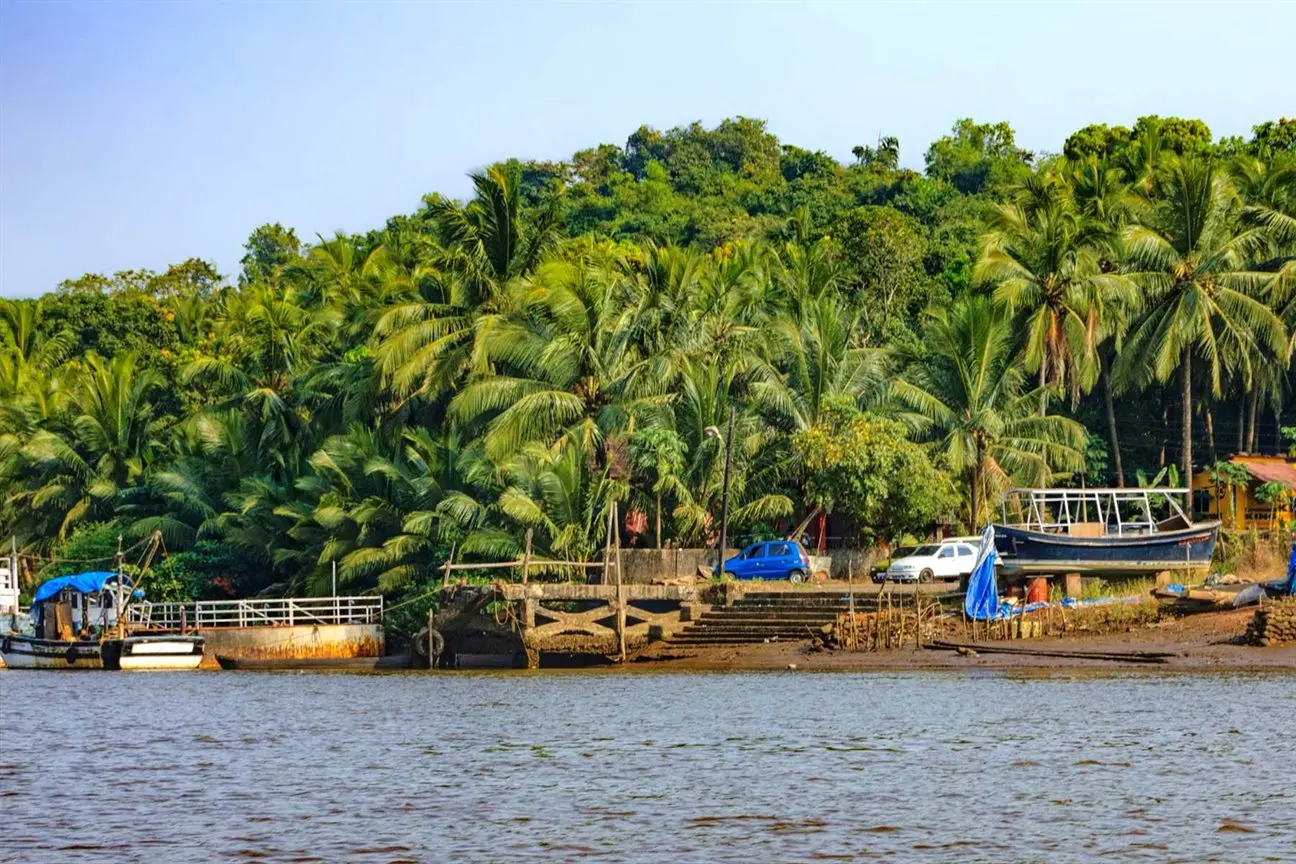
Chorão, also known as Choddnnem or Chodan, is an island along the Mandovi River near Ilhas, Goa, India. It is the largest among other 17 islands of Goa. It is located 5 kilometres (3.1 miles) away from the state capital, the city of Panaji and 10 kilometres (6.2 miles) away from the city of Mapusa. Even today, one can visit this area and see the distinct churches, graveyards and buildings all with a Portuguese air.
Majorda Beach-Goasouthgoa, goa
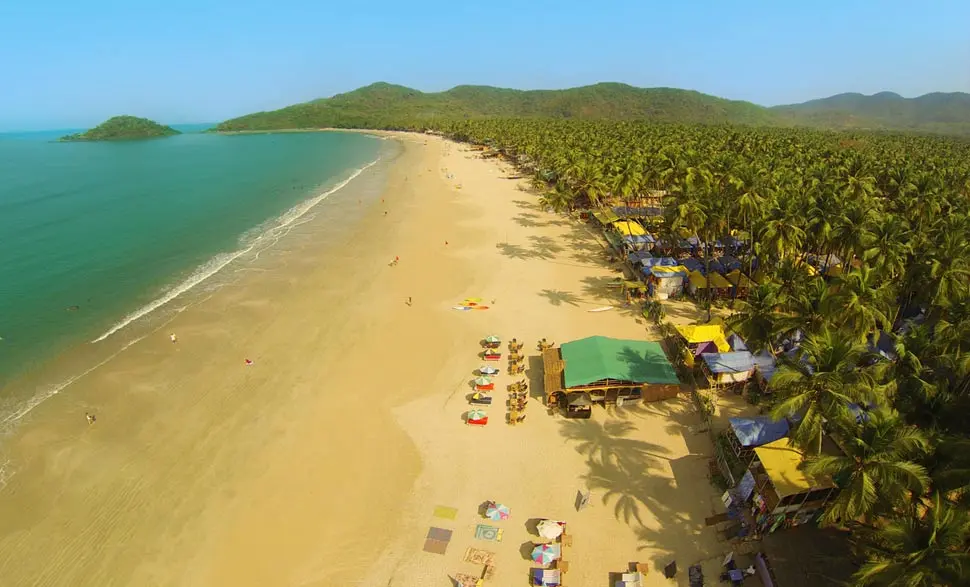
Majorda is a village in Salcete, Goa. It is located in South Goa district, north-west of Margão. The village is famous for its beaches. There are many beach resorts in Majorda. Majorda Beach is one of the most beautiful and admired beaches because of its location. Travellers come here to see the Sunrise and Sunset. It is also a leisure destination as tourists love to read books by the sea side and play sand making games here. Other attractions include indulging in beach games, water activities and sports. It is also one of the beaches, some of the best hotels of Goa making for a great stay with a mix of pleasure and luxury.
Harmal Beach-Goanorthgoa, goa
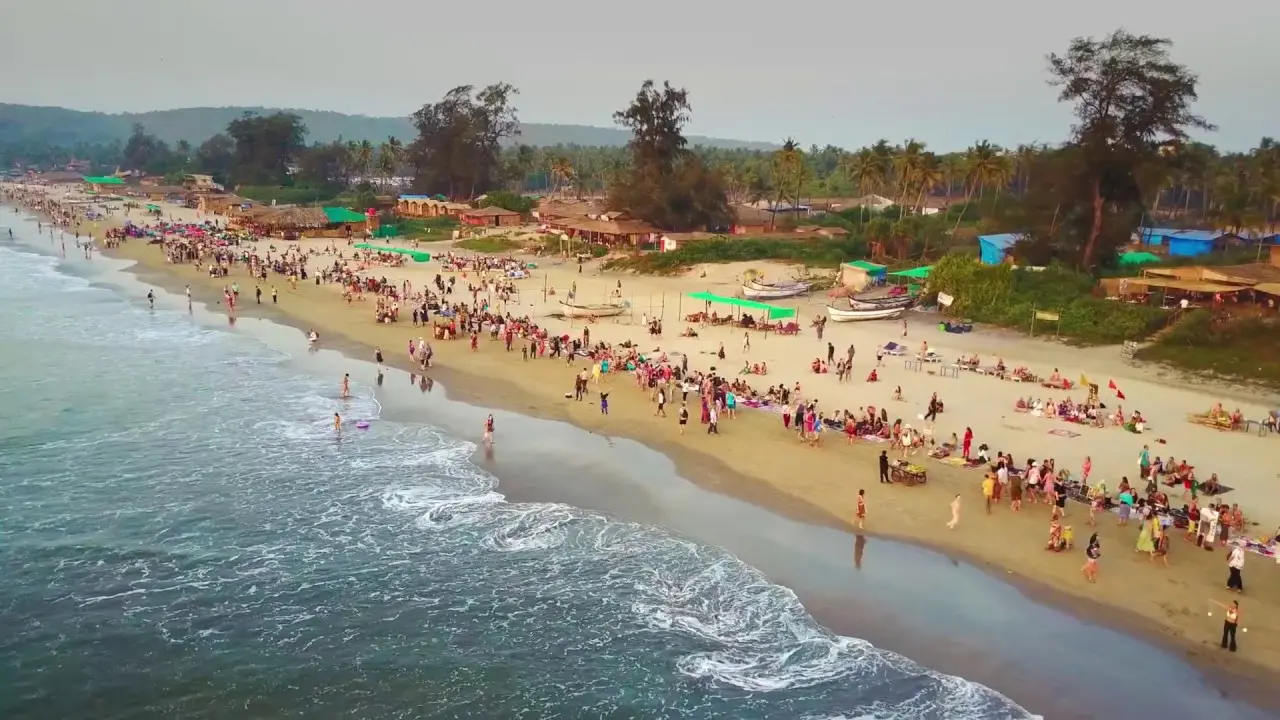
One of the best and cleanest beaches in Goa. Its a must visit especially for the sweet water lake present to the north of the beach. The name of this ancient place in Goa is Harmal which is been corrupted to Arambol. On the northern edge of the beach is a hill which contains soil full of ashes from yagyas performed by Lord 'Parashurama' . The konkan region i.e. right from Mumbai to Thiruvananthapuram is been created by Parashurama by filling the soil in the sea